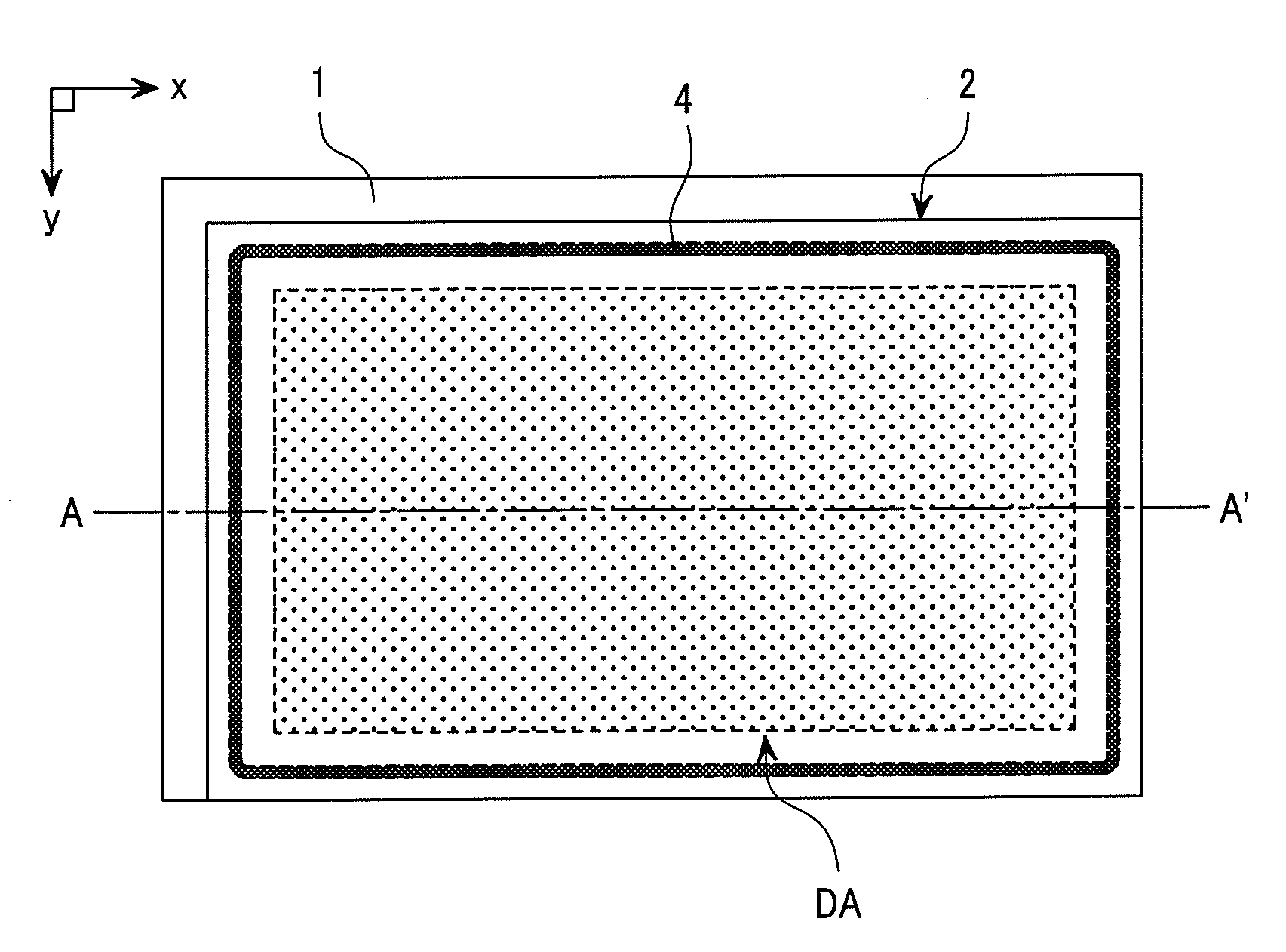Manufacturing method of display device
- Summary
- Abstract
- Description
- Claims
- Application Information
AI Technical Summary
Benefits of technology
Problems solved by technology
Method used
Image
Examples
first embodiment
[0112]FIG. 5 is schematic sectional view showing an example of the configuration of MOS transistors and a capacitor formed using a manufacturing method according to a first embodiment of the present invention.
[0113]A method of manufacturing the TFT substrate 1 according to the first embodiment will now be described using a case in which an nMOS and a pMOS, and a capacitor using a high concentration n-type semiconductor layer as an electrode are formed above the glass substrate 100, as shown in FIG. 5.
[0114]The sectional configuration of a region AR2 for forming an nMOS shown in FIG. 5 is similar to that taken along line D-D′ of FIG. 4A. The sectional configuration of a region AR3 for forming a pMOS shown in FIG. 5 is similar to that taken along line E-E′ of FIG. 4A. Therefore, the configurations of the nMOS and the pMOS shown FIG. 5 will not be described.
[0115]The sectional configuration of the region AR4 for forming a capacitor shown in FIG. 5 conceptually shows a portion related t...
second embodiment
[0160]FIG. 16 is a schematic sectional view showing the configuration of MOS transistors and a capacitor formed using a manufacturing method according to a second embodiment of the present invention.
[0161]A method of manufacturing a TFT substrate 1 according to the second embodiment will now be described using a case in which two types of nMOS that have different carrier concentrations and a capacitor that uses a high concentration n-type semiconductor layer as an electrode are formed above the glass substrate 100, as shown in FIG. 16.
[0162]The sectional configuration of a region AR4 for forming a capacitor shown in FIG. 16 is similar to that shown in the first embodiment (FIG. 5) and conceptually shows a portion related to the present invention, of the sectional configuration taken along line C-C′ of FIG. 3A. Therefore, the configuration of the capacitor shown FIG. 16 will not be described.
[0163]The sectional configuration of a region AR2 for forming a first nMOS shown in FIG. 16 i...
third embodiment
[0202]FIG. 26 is a schematic sectional view showing an example of the configuration of MOS transistors and a capacitor formed using a manufacturing method according to a third embodiment of the present invention.
[0203]A method for manufacturing a TFT substrate 1 according to the third embodiment will be described using a case in which two types of nMOSs that are different in source and drain configurations and a capacitor that uses a high concentration semiconductor layer as an electrode thereof are formed above the glass substrate 100.
[0204]The sectional configuration of a region AR4 for forming a capacitor shown in FIG. 26 is similar to that shown in the first embodiment (FIG. 5). It conceptually shows a portion related to the present invention, of the sectional configuration taken along line C-C′ of FIG. 3A. Therefore, the configuration of the capacitor shown FIG. 26 will not be described.
[0205]The sectional configuration of a region AR2 for forming a first nMOS shown in FIG. 26 ...
PUM
 Login to View More
Login to View More Abstract
Description
Claims
Application Information
 Login to View More
Login to View More - R&D
- Intellectual Property
- Life Sciences
- Materials
- Tech Scout
- Unparalleled Data Quality
- Higher Quality Content
- 60% Fewer Hallucinations
Browse by: Latest US Patents, China's latest patents, Technical Efficacy Thesaurus, Application Domain, Technology Topic, Popular Technical Reports.
© 2025 PatSnap. All rights reserved.Legal|Privacy policy|Modern Slavery Act Transparency Statement|Sitemap|About US| Contact US: help@patsnap.com



